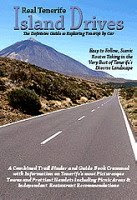The first time I heard a live band on Tenerife, it sent a shiver of excitement through my body. I can't remember where it was or when, but it involved a group of lads dancing with pumped up energy on a stage as they belted out a sound which had a mix of of hot sultry nights, cool mojitos and dark eyed and olive thighed women shaking their booties for all they were worth. It felt sensually exotic.
Six and a bit years further down the line, the same sound feels about as exotic as having fish and chips in Whitby. Now don't get me wrong, I enjoy fish and chips in Whitby and I still enjoy Latino/salsa music...but I also like to hear something different every now and again.
Like most people, the Canarios in general are creatures of habit. They know what they like and they stick to it like superglue. I've blogged before about Carnaval having three types of music – live salsa bands for the older revellers; DJs playing electro salsa for the younger revellers and for the teenagers, a nice pop salsa beat.
Every traditional fiesta I go to features live salsa music...except when it's traditional Canarian (of which there are about three original songs with an endless combination of variations).
I'm human and therefore prone to animal instincts and so am also a creature of habit. But the same thing over and over, whether it's food, music or anything for that matter, can become tedious.
Thankfully on Tenerife there are also loads of other places to get a music hit especially during summer months. There are classical concerts, rock, jazz, blues and proper old school trance. I've seen Robert Cray, Echo and the Bunnymen, Irish up and coming rockers The Deans and the wonderful Orishas (okay, they're Cuban Hip Hop with a Latino beat, but they have quite a unique sound) as well as a whole load of lesser known names. So I do okay for getting to listen to a wide range of live music, but here's the bit that is very revealing about the Canarian culture.
A couple of weeks ago we went to a concert that was part of the FMAC festival. This is a festival dedicated to alternative music. The alternative music in this case was jazz funk and indie rock. There you go, it's official - indie rock isn't part of the mainstream music scene here, it's classed as alternative music.
The other thing that speaks volumes is this. Thousands upon thousands of people always turn out for the traditional fiestas and the streets are filled with people of all ages salsa-ing the nights away.
For all the bands (with the exception of Orishas) I mentioned before and the alternative music festival the other week, the turn out was closer to a couple of hundred. The majority of local people simply want salsa, salsa and then some more salsa.
In truth it's admirable. It shows a culture which is rock solid and sticking to the things it likes, completely unaffected by half a century of mass tourism. Salsa might have lost some of its spice for me, but as long as there are plenty of 'alternative' festivals to maintain the musical balance, I'm a happy bunny – I can have the best of both worlds.
However, next time you're up north at a trad fiesta and there's some guy in the crowd shouting 'Give us some Kings of Leon,' you'll know who it is.
Say Halo Halo Halo For Saintly Memories
2 months ago






